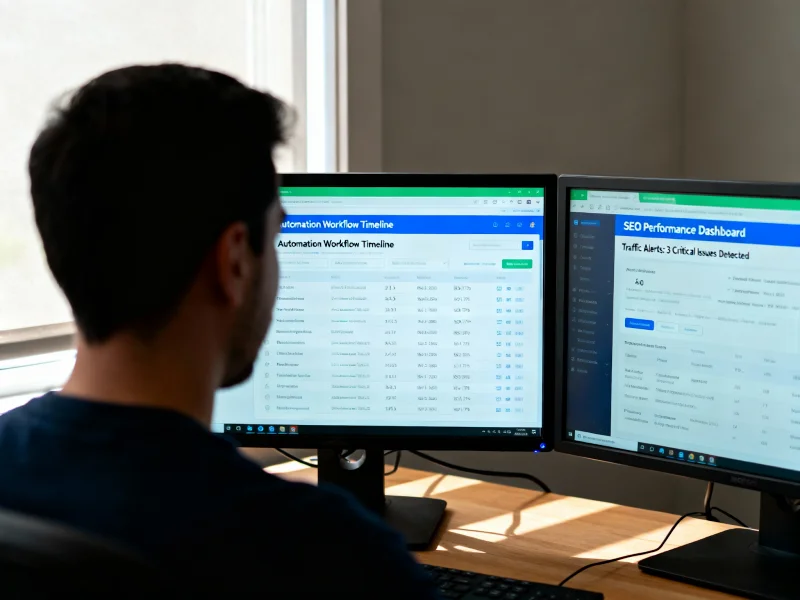What Is a Content Marketing Funnel?
A content marketing funnel is a strategic framework that guides potential customers through their buying journey—from the moment they become aware of your brand to the point they make a purchase. It includes three stages: Top of the Funnel (TOFU), Middle of the Funnel (MOFU), and Bottom of the Funnel (BOFU).
At each stage, your content should serve a specific purpose: attract, educate, and convert. If you're wondering what is a content marketing funnel, it's more than just a series of blog posts—it's about delivering the right content at the right time to move leads through each step of the journey.
Understanding these stages and implementing effective content creation strategies can enhance the customer experience and improve your sales funnel. Choosing the right marketing channel ensures that each piece of content reaches the right audience. By optimizing each stage of the customer journey, you can turn leads into paying customers who invest in your product or service. Discover more about optimizing your funnel!
#WhatIsAContentMarketingFunnel
Key Takeaways
- A content marketing funnel guides potential customers through their buying journey via three stages: Awareness, Consideration, and Decision.
- Each stage requires tailored content types, such as blog posts for awareness and case studies for consideration.
- Building trust is essential; high-quality content positions your brand as an authority and nurtures leads.
- Effective strategies include clear CTAs, targeted lead magnets, and consistent content to optimize engagement and conversions.
- Regular analysis of funnel metrics and A/B testing helps refine your approach for better results.
Understanding the Content Marketing Funnel
While traversing the complexities of digital marketing, understanding the content marketing funnel is essential for driving conversions. This strategic framework guides potential customers through their buyer's journey, leveraging relevant content at each stage. By focusing on audience segmentation, you can tailor your content to meet the needs and concerns of your target audience. The funnel consists of three primary components: top-of-funnel (TOFU), middle-of-funnel (MOFU), and bottom-of-funnel (BOFU), each requiring specific content types to effectively engage users. To ensure your content is effective, consider developing multi-purpose content that can be utilized across different stages of the funnel. To guarantee success, monitor funnel metrics like engagement and conversion rates, allowing you to optimize your strategy continually. Additionally, implementing a content calendar can help ensure that your content aligns with the different stages of the funnel effectively. By aligning your content with the funnel stages, you'll not only attract but also convert your audience into loyal customers.
The Three Stages of the Funnel
In the content marketing funnel, you'll encounter three key stages: Awareness, Consideration, and Decision. Each stage requires specific types of content that cater to your audience's needs at that moment. Understanding these stages helps you create a targeted strategy that guides potential customers from first learning about your brand to making a purchase. Additionally, having a content marketing strategy in place ensures that your content aligns with your business goals at every stage of the funnel. This alignment allows you to foster continuous learning and iteration in content production, enhancing your overall effectiveness.
Awareness Stage Content
How can you effectively reach potential customers at the beginning of their stage of the buying journey? Focus on creating engaging content that addresses their needs. Using awareness stage strategies like problem-centric content and educational resources, such as blog posts and infographics, helps educate your audience while generating brand awareness. This content not only attracts attention but also builds trust by showcasing your expertise. The awareness stage benefits your brand by laying a solid foundation for future engagement and establishing authority in your niche. By optimizing your content for search engines and engaging on social media, you'll increase visibility and keep your audience interested. Marketing funnels are also crucial in this process, ensuring a smooth transition through each phase. Remember, a positive first impression can sow the seeds for future conversions.
Consideration Stage Content
Once you've captured your audience's attention during the awareness stage, the next step is to guide them through the consideration stage of their buyer's journey. Here, you'll want to implement effective consideration stage strategies like in-depth guides, case studies, and product comparisons. These resources help educate prospects and build trust by addressing their specific concerns. Utilizing testimonials and FAQs can further enhance credibility. Don't forget to incorporate webinars and demos to showcase your product's value. Every stage of the marketing journey requires the right content to meet the needs of your audience. Tracking consideration stage metrics, like engagement rates and content downloads, will help you refine your approach. By providing valuable, detailed information, you encourage informed decision-making, ultimately leading your audience closer to choosing your product.
Decision Stage Content
The decision stage marks a critical point in the buyer's journey, where potential customers evaluate their options before making a purchase. Here, decision stage strategies play an essential role in guiding them toward a choice. You'll want to provide vendor comparisons, product reviews, and detailed FAQs to build trust and address objections. You might create content such as success stories and live demos to further demonstrate your product's value. Your decision stage goals should focus on establishing credibility and encouraging purchases through persuasive content. Funnel and ending this journey effectively can increase conversions. Consider using case studies, white papers, and comparison charts to communicate clearly and effectively. Identify specific stages to ensure targeted messaging. Content must be personalized and relevant, making it easier for potential customers to take action. Levels of the content marketing strategy should align with these efforts. Brands should also create content that strengthens long-term relationships. Consistency and measurement will help make your content more effective in driving results.
Content Types for Each Stage
As you navigate through the content marketing funnel, you'll discover that different content types play an essential role at each stage of your audience's journey. Understanding these content types helps in effective audience targeting:
- Awareness Stage (TOFU): Use educational blog posts, infographics, and social media posts to engage and inform potential customers.
- Consideration Stage (MOFU): Offer ebooks, webinars, and case studies that dive deeper into your product or service's benefits. Additionally, providing free tools can help users see immediate value and build trust in your brand.
- Decision Stage (BOFU): Provide free trials, customer testimonials, and pricing pages to help prospects make informed decisions.
Strategies for Effective Content Marketing Funnels
Effective content marketing funnels are essential for guiding potential customers through their decision-making journey. To enhance funnel performance, start by identifying and attracting your target audience using analytics tools. Audience segmentation allows you to deliver personalized content that resonates with specific personas. Engage prospects with interactive formats like quizzes and showcase testimonials for social proof. Implement lead nurturing campaigns via targeted email marketing to keep potential customers engaged. Continuously analyze user behavior with tools to identify drop-off points and optimize your content accordingly. Don't forget to diversify your content formats, emphasizing value at every stage to illustrate how your offerings solve problems. This approach not only nurtures leads but also drives conversions effectively.
Benefits of Implementing a Content Marketing Funnel
Implementing a content marketing funnel can substantially boost your lead generation by attracting the right audience with tailored content. You'll also enhance trust with potential customers as they engage with valuable information, making them more likely to choose your brand. Ultimately, these strategies lead to improved conversion rates, turning interested prospects into loyal customers.
Increased Lead Generation
Many businesses find that a well-structured content marketing funnel considerably boosts lead generation efforts. By implementing a solid content strategy, you can enhance your lead gen results through:
- Higher Conversion Rates: Targeted content for different funnel stages leads to 73% higher conversion rates.
- Effective Content Strategies: 80% of B2B companies use content marketing for lead generation, showcasing its effectiveness.
- Cost-Effectiveness: Content marketing costs 62% less than traditional methods while generating three times more leads.
This approach not only identifies and targets specific customer segments but also nurtures leads, increasing the likelihood of conversion. Ultimately, a content marketing funnel guides potential customers through their buying journey, making lead generation more efficient and effective.
Enhanced Trust Building
As you navigate the complexities of the buying journey, establishing trust becomes essential for fostering strong relationships with your audience. Implementing a content marketing funnel involves strategic trust building tactics that enhance your overall content strategy. By consistently delivering high-quality and educational content, you position your brand as an authority, which fosters credibility. Gradual engagement through microtransactions, like sharing valuable resources, can further build trust through the reciprocity principle. Nurturing leads with tailored content keeps them engaged and maintains relationships. Additionally, strategically placing your content where your audience is most active guarantees your message resonates. By focusing on these elements, you can effectively enhance trust, paving the way for deeper connections and loyalty from your audience.
Improved Conversion Rates
When you leverage a content marketing funnel, you can greatly boost your conversion rates. By implementing effective conversion strategies and focusing on audience segmentation, you can see significant improvements. Here are three key benefits:
- Personalized CTAs: Tailoring calls to action can enhance performance by 202%, making your offers more compelling.
- Retargeted Ads: Engaging previous visitors with retargeted ads can increase conversions by 147%, keeping your brand top-of-mind.
- Landing Page Optimization: Fast-loading landing pages (1 second) can convert 2.5 times better than slower ones, ensuring potential customers don't lose interest.
Common Challenges in Content Marketing Funnel Implementation
While implementing a content marketing funnel can greatly enhance your brand's visibility and engagement, several common challenges can hinder its effectiveness. One major issue is content consistency; inconsistent posting can erode trust and lead to audience disengagement. Team alignment is essential, too—when marketing and sales teams operate in silos, content often misses the mark in addressing customer needs. Quality assurance is another hurdle; low-quality content fails to resonate with your target audience, resulting in poor conversion rates. Finally, inadequate analytics utilization and lack of customer feedback can prevent you from optimizing your funnel effectively. By addressing these challenges, you can enhance your content marketing strategy and foster deeper connections with your audience.
Real-Life Examples of Content Marketing Funnels
Understanding real-life examples of content marketing funnels can provide valuable insights into effective strategies and tactics. Here are a few industry case studies showcasing real-world applications:
- HubSpot: They use informative blog posts to raise awareness, offer e-books for consideration, and provide free trials to drive decisions.
- Airbnb: They inspire travelers through engaging social media content, showcase properties with vivid descriptions, and leverage user reviews for credibility.
- Dollar Shave Club: Their viral videos create awareness, humorous content builds brand identity, while exclusive offers convert prospects into loyal customers.
Tips for Optimizing Your Content Marketing Funnel
To optimize your content marketing funnel effectively, focusing on key strategies that enhance user experience and drive conversions is essential. Start by creating clear and compelling CTAs that guide users through the funnel. Ensure your content aligns with each funnel stage—awareness, evaluation, conversion, and delight. Use targeted lead magnets like eBooks or webinars to capture prospects' attention. Implement effective email marketing to nurture leads with automated, value-driven content. Regularly analyze funnel metrics to identify areas for improvement, and don't forget to A/B test different elements for better results. Finally, prioritize a seamless user experience by ensuring your website is easy to navigate and quick to load, ultimately enhancing engagement and conversions.
Conclusion
To sum up, mastering the content marketing funnel can significantly enhance Authority Solutions®' visibility and engagement. By understanding its stages and tailoring your content accordingly, we can effectively guide potential customers from awareness to conversion. Implementing effective strategies, overcoming challenges, and continuously optimizing our approach is essential. With real-life examples to inspire our efforts, Authority Solutions® is well-equipped to create a successful content marketing funnel that drives results. Start refining your funnel with us today and watch your business thrive!
Frequently Asked Questions
What is a content marketing funnel, and why does it matter?
A content marketing funnel is a framework that guides potential customers through stages of awareness, consideration, and decision using targeted content. It matters because it ensures your message resonates with people at the right moment in their journey, boosting trust and conversions..
What are the main stages of the buyer’s journey in a marketing funnel?
The stages of the buyer’s journey align with the three primary marketing funnel stages:
- Awareness (Top-of-Funnel Content): Use educational content to help prospects learn about their problems.
- Consideration (Middle-of-the-Funnel Content): Provide in-depth MOFU content, such as case studies or product comparisons.
- Decision (Conversion Stage): Offer testimonials, free trials, and persuasive content to close the sale.
How do I build a content marketing funnel that works?
To build a content marketing funnel, start by identifying your audience’s needs and mapping out content for each stage. Use different types of content, such as blog posts for awareness, webinars for consideration, and testimonials for conversions. Regularly analyze marketing metrics to refine your strategy.
How does a digital marketing funnel differ from traditional sales funnels?
A digital marketing funnel incorporates online content, such as SEO-driven blog posts and social media engagement, to attract leads. Unlike traditional funnels, marketing funnels vs. sales funnels differ in that content marketing focuses on long-term trust-building rather than direct sales pitches.
What kind of content should I create for each stage of the marketing funnel?
Each piece of content you create should align with the customer journey:
- Top-of-Funnel Content: Blogs, infographics, and social media posts.
- Middle-of-the-Funnel Content: Whitepapers, webinars, and product guides.
- Bottom-of-Funnel Content: Case studies, testimonials, and pricing comparisons.
How do I optimize my marketing funnel for better conversions?
To optimize your marketing funnel, ensure that you have a clear call-to-action at every stage. Use A/B testing to refine messaging, track marketing metrics, and leverage automation tools to nurture leads efficiently.
How much content do I need for an effective funnel?
There’s no fixed amount, but much content isn’t always better. Focus on creating in-depth content that provides value at every stage. Ensure your marketing campaign remains consistent and aligned with your marketing plan.
What’s the difference between top-of-funnel content and MOFU content?
Top-of-Funnel Content (TOFU) is broad and educational, aimed at attracting new visitors. MOFU content (Middle-of-the-Funnel Content) is more detailed, helping prospects evaluate their options before making a decision.
How do marketing platforms help in funnel optimization?
A marketing platform provides tools to analyze audience behavior, automate email sequences, and track marketing metrics. These insights help refine your funnel, ensuring your marketing funnel is a framework that drives real results.
Why should businesses invest in building a content strategy for their marketing funnel?
Building a content strategy ensures a structured approach to content creation, aligning with business goals. A funnel for the customer journey maximizes engagement, nurtures leads, and ultimately drives conversions, making it an essential part of a successful marketing sales funnel.









